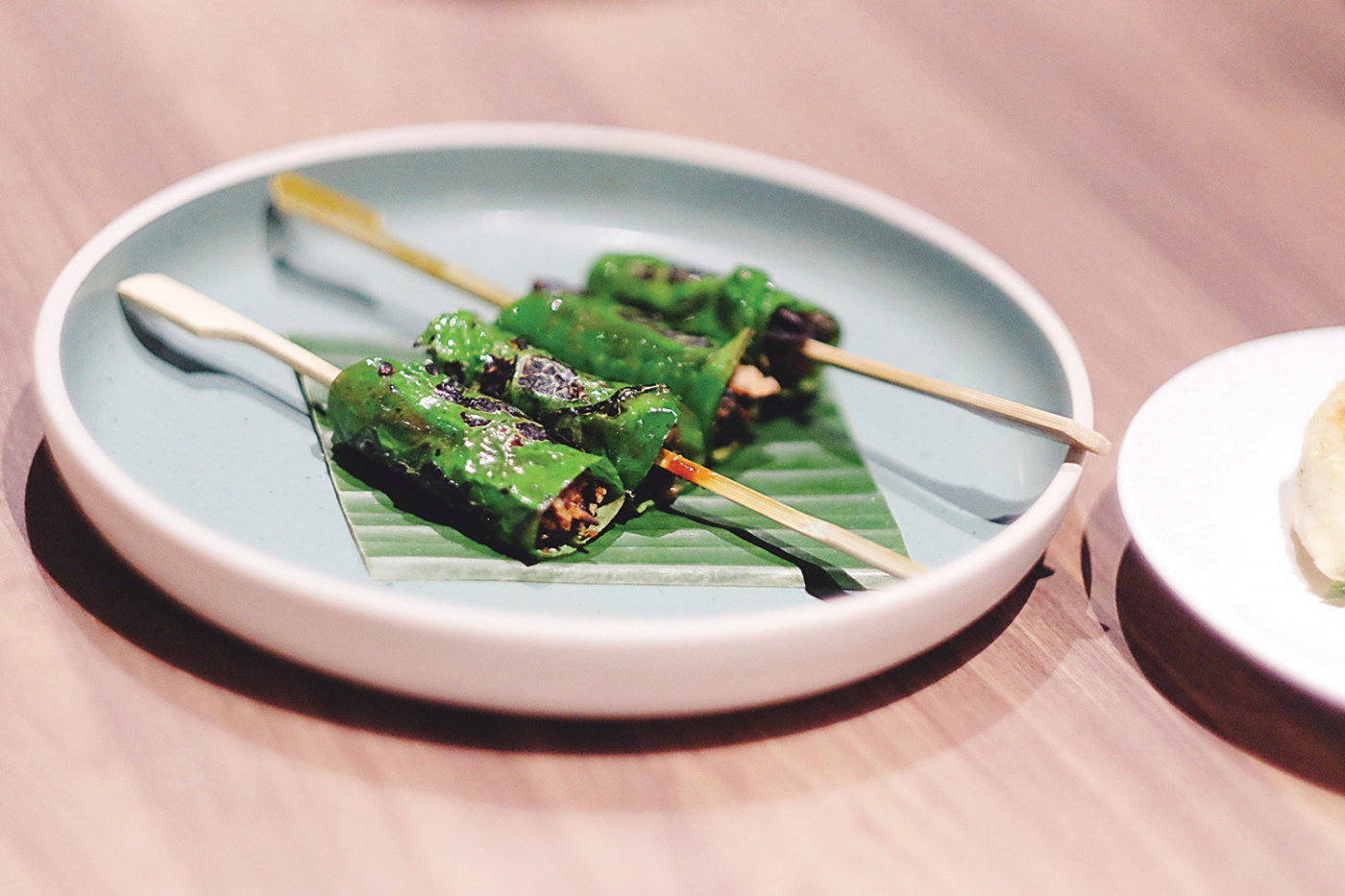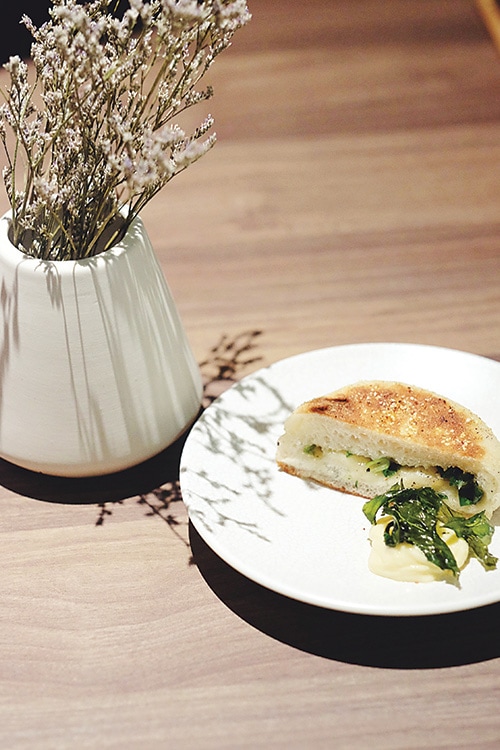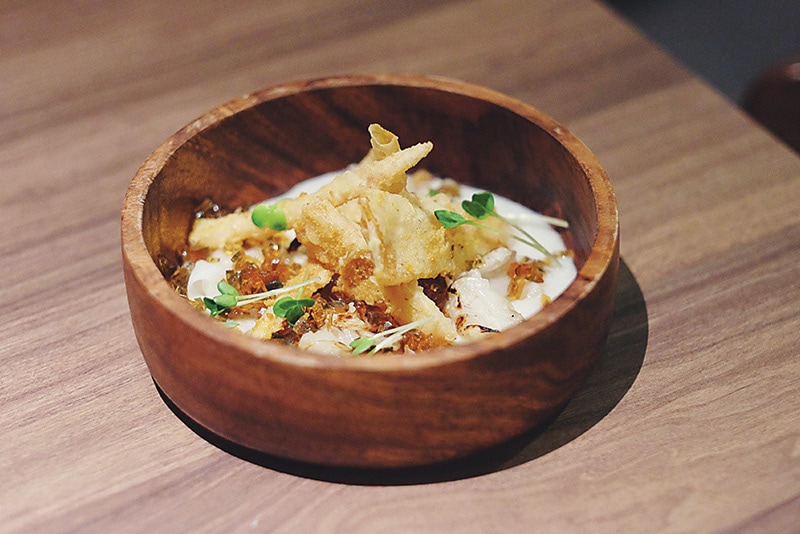MasterChef Asia Winner Woo Wai Leong Displays Himself At Restaurant Ibid
The transition from televised MasterChef Asia to brick-and-mortar restaurant couldn’t have been easy. And I celebrated the opening of Restaurant Ibid, fervently, with an inaudible inner cheer upon stepping into its Chinoise themed settings.
Upon first glance, it’s evident that there are deep pockets involved. A shophouse in the Boat Quay precinct. Clean aesthetics, with a cool colour palette and a raised platform that leads to an open kitchen housing some modish equipment that you’ll immediately hold responsible for the creative menu you’re about to luxuriate in. Chef and owner Woo Wai Leong is a man on a mission. In pursuit of his roots, the exploration resulted in a ‘Nanyang-style, Contemporary Chinese’ cuisine that is closely linked to memories, life experiences and relationships. It’s endearing and idyllic to say the least, but in a nutshell, my dinner was very forgettable.
Is this review a hard one to write? It is indeed. Wai Leong’s vision boasts and brags, but it doesn’t walk the talk. And if I’m going to be brutally honest, the disclosure statement might just be a little too lengthy for most. First things first, I’m a huge Wai Leong fan, from MasterChef Asia to my first encounter at The Horse’s Mouth. Yes, I’m still blushing as I recall those annoyingly innocent fangirl moments when he made me a cocktail, a ridiculously balanced one at that—to supporting him at Salted and Hung when he made a kitchen appearance alongside Reynold Poernomo from Australia. 3 years on, I am over the moon to hear about his new venture and even more elated for the opportunity to dine at his venue in the first few weeks of its opening. It would have made the perfect MasterChef success story, if not for the flaws so evident that they parade around as whole dishes.
Like most ambitious chefs kicking off a restaurant in Singapore, Wai Leong overthinks the concept. The press release expounding thought processes and inspirations that are better translated at the table with each and every dish being presented. Unfortunately, you’re not bestowed with that fortune if you’re seated at the peripheral tables. Entertaining the dining counter customers pose a big enough challenge as it is. The oneness of keeping up with the food sustainability trend, the cultural foodways and the pressing need to construct identity had overwhelmed him. And despite all of that, at the end of the meal, I leave baffled and seemingly clueless about what Restaurant Ibid is really trying to achieve.
Your first bite is probably the best morsel you’ll entertain the whole night. A golden brown spring onion shaobing with yeasted butter offers a lot of action on the tastebuds and works in teasing the appetite. It’s crisp and chewy, with an oily flake when you pull it apart to lather more fats on. There’s also a very clever skewer of escargot wrapped in charred betel leaves, they look positively vegan on the outside but delve a little deeper to reveal a moreish snack backed by Dou Ban Jiang mayonnaise—not bad, the vision speaks.
At Ibid, inspirations are taken out of context and flayed wildly on to a plate. If no one had told me the next course was created with the humble tea egg in mind, I wouldn’t have drawn that semblance. A sous vide organic egg sits in a bath of tea broth elevated with aged mandarin peel, rock sugar and kelp. It’s pedestal, a white onion soubise that possessed a lovely tang from the incorporation of sour cream. It’s an Instagram darling of a dish, but mildly plebeian. One thing is for sure, his ramen shop experience had paid off well—that egg, jammy in the centre, was impeccable.
The meal progresses swimmingly thanks to the flawless service provided by Audrey who is an enchantress of a hostess. She touts the next course, a vegetarian dish of White radish porridge inspired by Wai Leong’s sister. It’s genre-bending and in some sense quite bizarre. White radish trimmings are boiled till soft then cooked overnight with rice, soy milk and finished with butter and salt. I loved it. Owing to my own experience, it conjured the comforts of a home dish, the kind of thing that your mother would spend an entire evening coaxing life into.
There is a bland, tepid lamb tartare that was brought to our attention next. I don’t blame the guy. Sure, Xinjiang Spicy cumin lamb skewers and a cold Tiger Beer can be so appealing after a long shift. But to massacre awesome memories of riotous supper times, that wasn’t quite what I signed up for. Lamb rump is charred in the pan, chilled, hand-chopped and roughed up with a spice mix of cumin, chillies and Szechuan peppercorns. I found comfort in the blessed vehicles of deep-fried lotus root and beseeched to move on to the next course, which diligently paid homage to a local fish farm. The next dish of Ah Hua Kelong Grouper is big on the novelty factor due to the accompaniments of shaoxing fumet and tofu ‘butter’, both of which are introspective and intensely savoury with a zing. However, the dish falls short due to the execution of the fish, I would have liked mine a little crispier on the skin.
I loved the dish of Short Rib that I gathered would be a mainstay, given that it’s the second time I’ve seen it on his menu. Pickled black fungus layered with flavours of soya sauce, chinkiang vinegar and sugar are conversation starters, it’s complex tanginess providing welcome respites from the richness of the short rib that had been arduously sous vide for 48 hours. The dish is topped with silky nashi pears that have been dehydrated and rehydrated and drizzled with chicken jus enriched with butter and Angelica root. Clearly, Wai Leong has a penchant for hanging around traditional Chinese medicinal halls. The other meat dish of Momoiro Pork collar, you’ll be less concerned with. It hides behind a veil of sheer wonderment that the star of the plate is the equivalent of a Rolls-Royce in the pork world, however failure to highlight the protein through execution awkwardly becomes a backlash.
Savouries conclude with a carbs dish, just like it would in a regular wedding banquet. There was a steamed Lotus Rice which was more sophisticated than its humble billing—rice mixed with butter fried shiitake mushrooms, the mysterious crumble of preserved liver sausage and a piece of seared foie gras bringing the classic dish into the 21st century. I was enchanted.
Having been a huge supporter of Wai Leong in his MasterChef days, I must relinquish the fact that his flair for pastry is the most important skill in his arsenal. Thankfully, for the dessert course, he took that and went to town with it. I’ve previously had his soy milk ice cream with goji berry swirl and was most impressed. This time around, the divine treat makes a righteous comeback in the form of Soy Milk Ice Cream with sesame cake, almond foam and Sarawak pepper; conjuring warm memories of a Saturday breakfast drink of soy bean milk straight from the wet markets. This dessert resonated with me on many levels. The almond foam seeping into crevices of the tender cake while nutty black sesame crumble breaks the white on white composition.
If you’re in a good mood, you won’t think too hard about the less than symphonic progression of the meal or the clumsy plating that one would not expect from an omakase menu only restaurant. Or the lack of attention paid to proper technique (non-crispy fish and overcooked pork, case in point) for that matter. Sure, there were blinding rays of hope throughout the meal but only because of the lengthiness of certain flavour extraction processes. I left the restaurant, perturbed by the concept of Nanyang-style cuisine. If this is a man’s idea of putting his life on a plate, he might just be experiencing some form of identity/existential crisis. There’s no denying that Restaurant Ibid has lots of potential, however, it would require a little more time to wring out.






